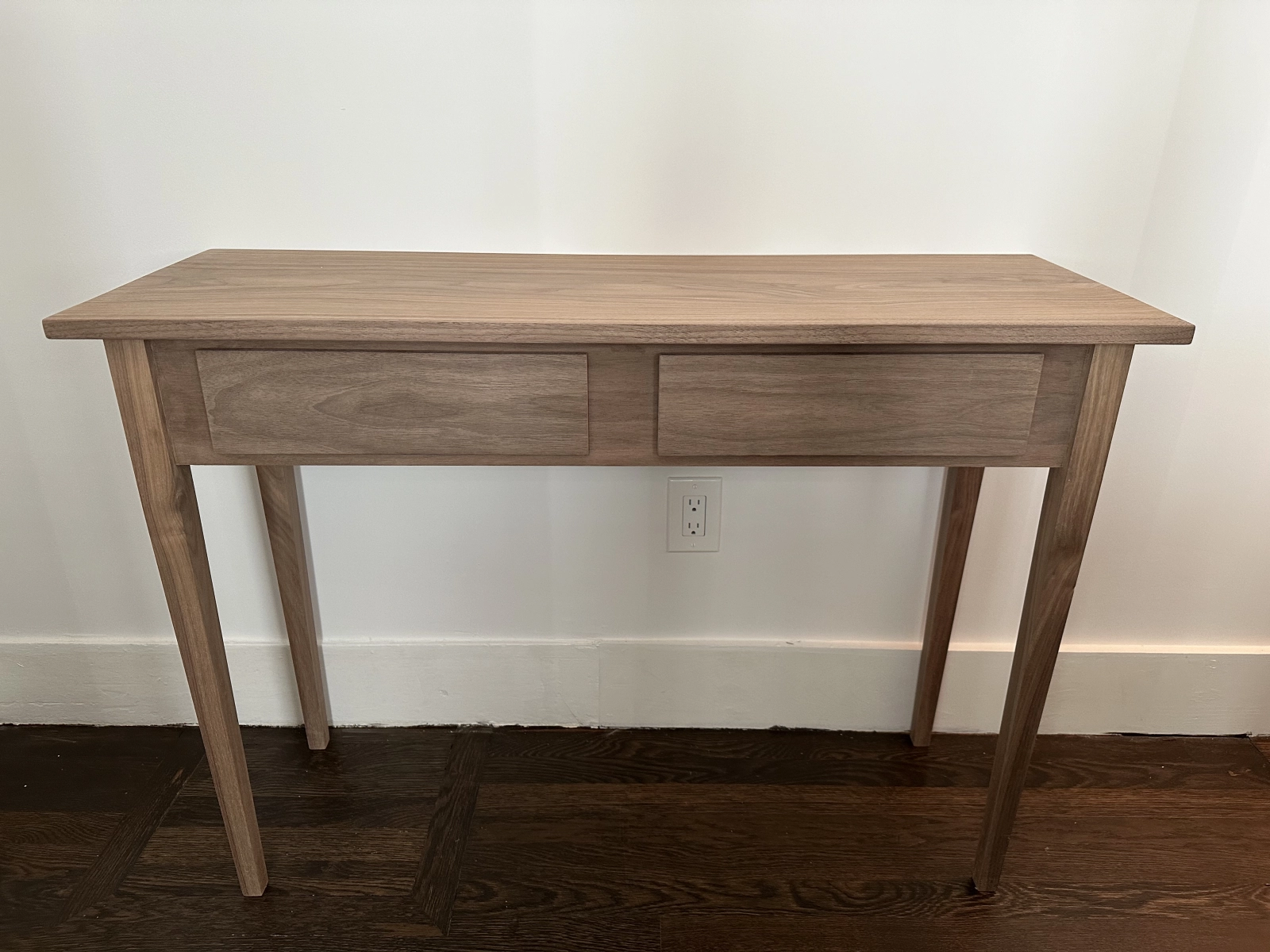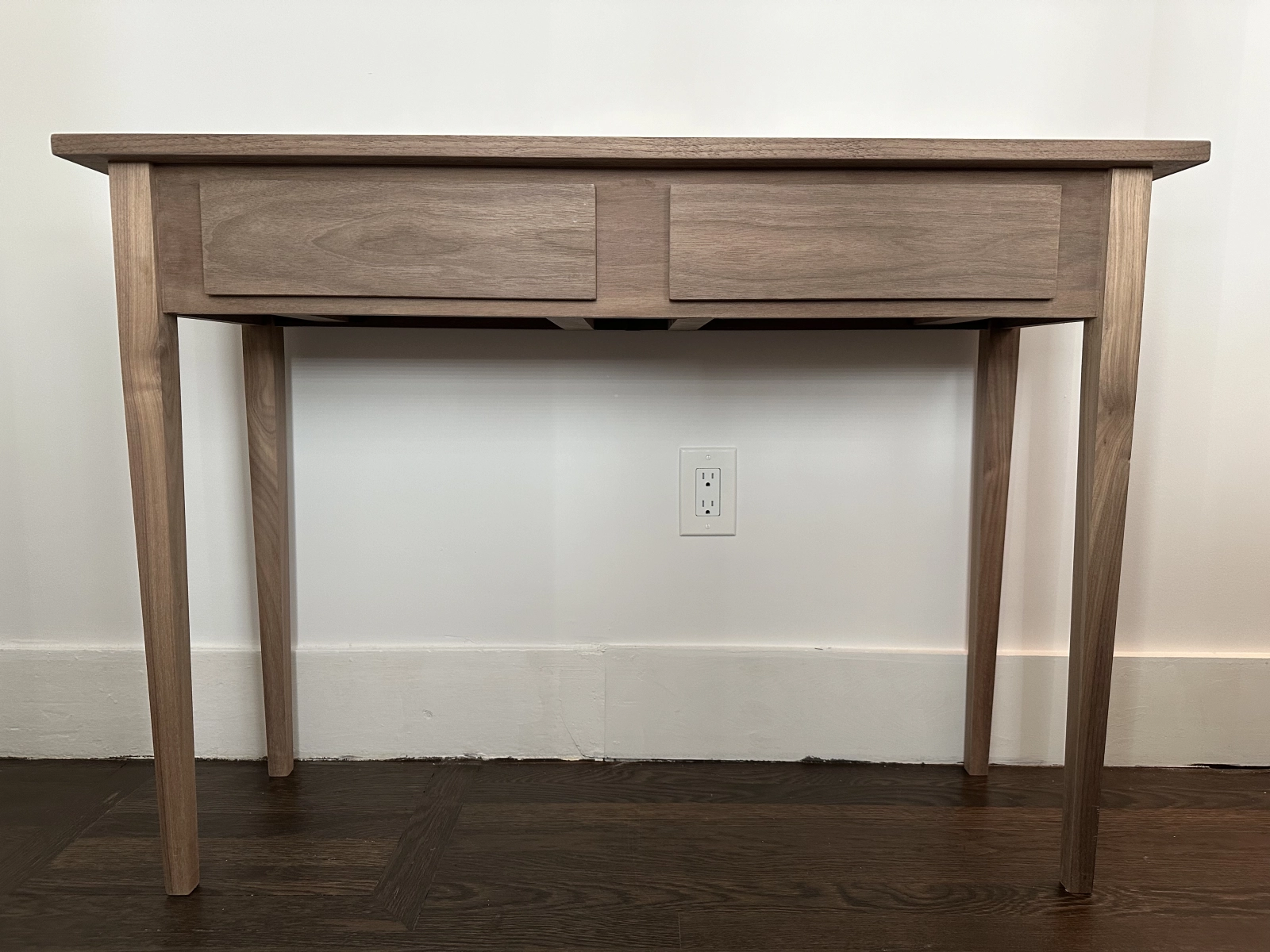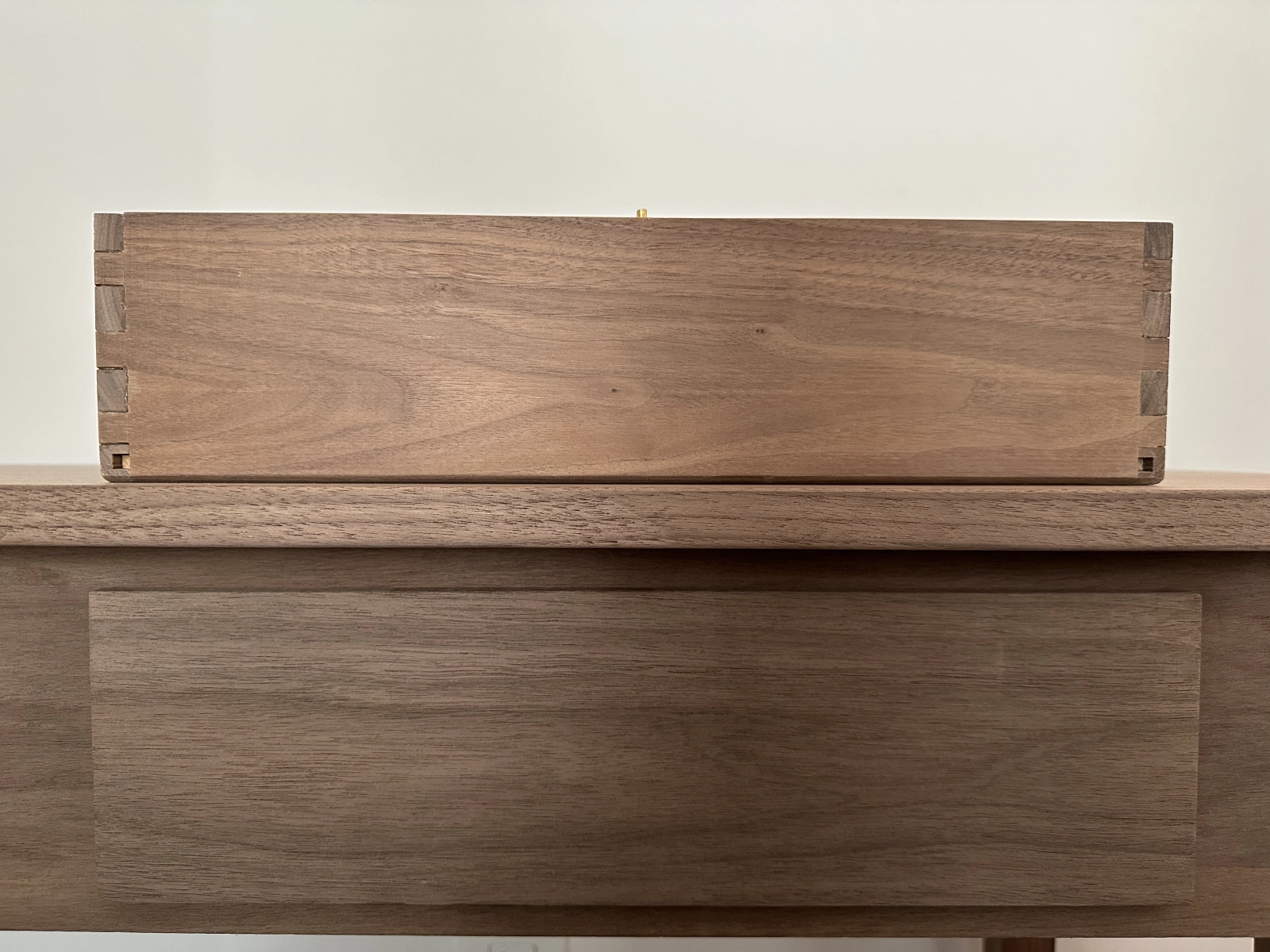Not all projects turn into regular hobbies, but I’m still proud of what I learned and built.
Shaker Hall Table
I built this Shaker Hall Table at the Cambridge Center for Adult Education during my career sabbatical. I learned how to use some power tools safely (e.g., table saw, drill press, chop saw, jointer, planer). Highlights included learning how to hand-cut dovetails with a Japanese hand-saw and a chisel and then hand-cutting all the dovetails for my drawers.
It still needs to be sanded in some areas and then stained, but I wanted to get up some photos sooner than later.
Top View
 The table-top is two pieces of wood that were glued together and then hand-planed and sanded.
The table-top is two pieces of wood that were glued together and then hand-planed and sanded.
Front View
 I’m pretty happy with how the wood grain pattern flows over the two drawer faces. I’m not sure what kind of handle pulls I want yet, though I’ve been considering making a ceramic pull at Mudflat!
I’m pretty happy with how the wood grain pattern flows over the two drawer faces. I’m not sure what kind of handle pulls I want yet, though I’ve been considering making a ceramic pull at Mudflat!
Back of Drawer Dovetails

I hand-cut all the joints for the drawers with a japanese hand-saw and chisel. It took quite a while, but it was really satisfying when the pieces came together.
Somerville Climate Forward: Strategy + Opportunity / Solution Tree
I’ve been volunteering as a Somerville Climate Forward Ambassador in the 2024 cohort. As I started to get familiar with the 2018 Climate Forward Plan and saw some of its updates, I was curious about:
- Beyond the very high-level outcomes (e.g., buildings run on 100% renewable energy), what are the lower-level outcomes that we want to effect in order to achieve that goal?
- How do the action areas limit our thinking about other opportunities to address climate change in Somerville?
- What opportunities were considered but didn’t make it in?
- How could we make it easier to get the community involved in thinking about opportunities to act?
- How could we use experimentation to accelerate delivery of solutions?
While I was at edX, I was introduced to Teresa Torres’s Opportunity / Solution tree model. The approach invites you to be explicit about the outcome that you want to effect (e.g., Residential Buildings use 100% renewable energy.). Once you have a clear outcome, identify opportunities for you to effect your outcome through customer interviews and research. You’re looking to create value for your customer (e.g., “Renewable energy is too expensive for me.” ). From there you can consider a variety of different solutions (e.g., Somerville negotiates a competitive rate for the entire community.), which could ultimately move the needle toward the outcome you want. Finally, the model invites you to test your assumptions (e.g., Develop an RFP to gather proposals from a variety of energy providers.) before setting out and committing to anything.
I adapted The Opportunity / Solution tree model by adding a Vision level (i.e., “What does the future look like?”), Objectives level (i.e., “What goals do we need to achieve to realize the vision?”), and a Strategic Areas level (i.e., “What path do we take to get to the objective?”) These levels sit on top of the traditional “Outcomes” level, allowing someone to visually trace how a specific solution (or set of solutions) won out over a number of alternatives – and how it ties back to a particular outcome.
You can check it out below. It’s a work in progress, so you may notice changes from time to time. Reach out on my Contact page if you have feedback and want to help me pressure test it!
To open the board in a new browser tab:
- Click on the “M” icon in the lower left-hand corner of the embedded board below.
Finally, I recorded a short talk-track, which you can find at the top of the whiteboard next to the vision statement.